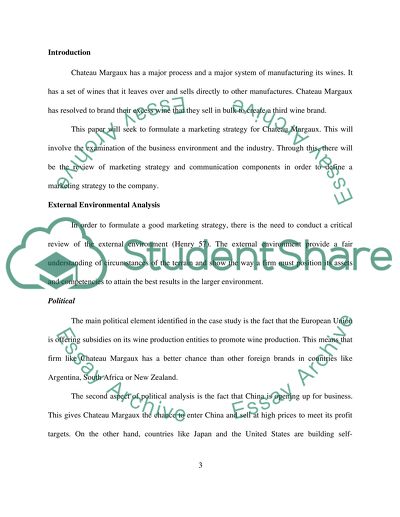Cite this document
(“Chateau margaux:launching the third wine Essay Example | Topics and Well Written Essays - 2500 words”, n.d.)
Retrieved from https://studentshare.org/marketing/1498894-chateau-margauxlaunching-the-third-wine
Retrieved from https://studentshare.org/marketing/1498894-chateau-margauxlaunching-the-third-wine
(Chateau margaux:Launching the Third Wine Essay Example | Topics and Well Written Essays - 2500 Words)
https://studentshare.org/marketing/1498894-chateau-margauxlaunching-the-third-wine.
https://studentshare.org/marketing/1498894-chateau-margauxlaunching-the-third-wine.
“Chateau margaux:Launching the Third Wine Essay Example | Topics and Well Written Essays - 2500 Words”, n.d. https://studentshare.org/marketing/1498894-chateau-margauxlaunching-the-third-wine.


